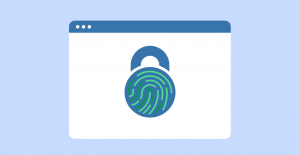Key takeaways:
- With more than a billion websites on the internet, a unique domain name and extension lets users visit your website easily.
- Google.com is the most popular domain name, while .com is the most common domain extension online.
- Learning the top domain names and extensions can give you a good reference in choosing your website’s domain name.
Why do so many websites end in .com, and what makes .org or .net different?
The ‘.com’ and ‘.net’ at the end of your domains aren’t just add-ons—these are domain extensions, and they help tell people what your site’s about.
Let’s break down the most popular domain extensions and common domain names on the internet. Knowing them can help you make smarter choices for your own website.
Find the perfect domain
Ready to register a domain name? Check domain availability and get started with Network Solutions today.
What is a domain name?
A domain name is a unique identifier that corresponds to a specific IP address on the internet. It serves as a human-readable label, simplifying the process of accessing websites.
They comprise two main parts: the top-level domain (TLD) and the second-level domain (SLD).
Top-level domains
The TLD, also known as a domain extension, indicates the general category or purpose of the website. For example, .com is commonly used for commercial websites, .org for organizations, and .edu for educational institutions. TLDs are divided into four types:
- Generic TLDs (gTLDs). Used by anyone for general purposes. These include well-known domains like .com, .org, and .net.
- Sponsored TLDs (sTLDs). Managed by specific groups with usage restrictions. Examples include .edu for schools and .gov for U.S. government sites.
- Country code TLDs (ccTLDs). Two-letter domains linked to countries or regions, like .us (United States) or .uk (United Kingdom).
- New generic TLDs (new gTLDs). Newer domain extensions that offer more branding options, such as .tech, .store, or .design.
Second-level domain
The SLD denotes the specific entity or brand and is positioned before the TLD. If you take “Google.com” for example, the word “Google” is the SLD in this domain name.
Additionally, subdomains can precede the SLD, further segmenting and organizing web content. A subdomain is a part of a larger domain name. For example, if “website.com” is the main domain, “blog.website.com” could be a subdomain specifically for the blog section. It helps users navigate to different areas of the website more easily.
Subdomains are commonly used for things like blogs, forums, or different language versions of a website. They give website owners more flexibility in organizing their content and improving user experience.
Top 13 most common domain extensions
We’ve laid out the basics, now let’s go over the most common domain names used on the internet according to Statista’s 2025 data. Currently, .com, .org and .de are the top common domain extensions online.
- .com
- .org
- .de
- .br
- .ru
- .uk
- .net
- .jp
- .it
- .fr
1. .COM
The .com extension stands for “commercial,” and was originally intended for businesses and commercial entities. Over time, it became the go-to domain for almost everything—from eCommerce stores to blogs to personal websites.
When people think of a website, they automatically think “.com.” As of 2025, it still holds the most domain registrations worldwide with 43.7% global website usage, making it the most trusted and recognized TLD on the internet.
2. .ORG
.org was created for non-profit organizations, but like .com, its usage has grown far beyond its original purpose. Today, it’s commonly used by communities, open-source projects, social initiatives, and sometimes even businesses that want to present a more neutral or mission-driven image.
Its association with non-commercial websites appeals to organizations emphasizing their mission. It remains one of the top choices after .com at 4.2% global usage, especially for those building credibility and trust.
3. .DE
The .de domain is Germany’s country code and one of the most established ccTLDs globally. It was created for websites targeting German audiences or businesses based in Germany. The .de extension carries a strong reputation in Europe, especially among German-speaking users. Its popularity is tied to the country’s large digital economy and trust in local domain names for search rankings and credibility.
4. .BR
.br is Brazil’s country code domain, used widely by local companies, bloggers, and government organizations. Brazil’s large population and growing internet economy contribute to the high number of .br domain registrations. Brazilian internet users trust .br domains for accurate, localized information, which is why it remains a favorite for businesses trying to reach a Brazilian audience.
5. .RU
The .ru domain was created for Russia and remains the primary domain extension used by businesses and organizations within the country. It’s popularity hinges on its local familiarity and because its high performance in Russian search engines. Many Russian-speaking users trust .ru domains for content that’s more relevant to them culturally and linguistically.
6. .UK
.uk is the country code for the United Kingdom and is commonly used by businesses, government agencies, and individuals across England, Scotland, Wales, and Northern Ireland. It was created to help distinguish UK-based websites and is often paired with second-level domains like .co.uk. Users trust .uk because it shows clear regional relevance and is associated with British professionalism and quality.
7. .NET
Short for “network,” .net was initially designed for network-based companies like internet service providers or infrastructure services. However, many businesses or tech startups choose .net when their desired .com is taken, and it still feels professional and reliable. It’s a solid backup that still holds weight in terms of trust and familiarity. That’s why it continues to be one of the most registered TLDs globally.
8. .JP
.jp is Japan’s country code top-level domain (ccTLD) and is known for its strong local identity and credibility. It’s widely used by Japanese companies, institutions, and individuals who want to signal authenticity and relevance within Japan.
Because Japan has a highly digital and tech-savvy population, .jp domains are associated with quality, reliability, and local authority. Many global brands operating in Japan also secure a .jp domain to localize their online presence.
9. .IT
.it represents Italy and is the country’s official ccTLD. It’s commonly used by Italian businesses, eCommerce stores, and individuals looking to establish a trustworthy online presence within Italy.
The extension also has creative international appeal — many English words naturally end with “it,” making .it popular for clever domain hacks like “buyit” or “buildit”. This versatility contributes to its sustained popularity both in and beyond Italy.
10. .FR
.fr is France’s country code domain and one of Europe’s most recognized ccTLDs. It’s primarily used by French businesses, organizations, and individuals who want to emphasize their local roots and credibility.
French internet users tend to prefer .fr websites for both cultural and trust reasons, since it’s a strong indication of local laws and data standards compliance. With France’s strong digital presence, .fr continues to be one of the most registered and respected European domains.
Most popular domain names on the internet
There’s no better way to see .com’s prominence as a domain extension than looking at the internet’s leading websites. We’re talking about the most popular domain names almost anyone online could recognize.
Large websites like Google, Facebook, and YouTube continue to domainatedominate the internet’s traffic. Here’s the full list:
- Google.com: Google needs little introduction; it’s the foundation of the internet’s infrastructure. Founded in 1998, Google has evolved from a humble search engine to a technological behemoth, offering a myriad of services and products. With its unmatched dominance in search and innovation, Google.com has become synonymous with accessible information.
- Facebook.com: Facebook revolutionized the way we connect and communicate online when it was launched in 2004. Its domain name, Facebook.com, embodies its role as a virtual social hub, facilitating friendships, sharing memories, and fostering communities worldwide.
- Youtube.com: When you hear “YouTube.com”, you’ll immediately think of video sharing and content creation on the internet. Established in 2005, YouTube changed the way we consume and produce video content, empowering creators and entertaining audiences worldwide.
- Amazon.com: In 1994, Amazon transformed the retail landscape by offering a vast selection of products and incredible convenience to consumers. Its domain name, Amazon.com, symbolizes its global reach and ambition to be the “everything store” for customers worldwide.
- Wikipedia.org: Wikipedia is the largest online encyclopedia, making knowledge and information accessible. As a trusted source of information across numerous topics, Wikipedia.org has become an essential resource for learners and researchers alike.
- X.com (formerly known as Twitter): X introduced the concept of microblogging in 2006, enabling users to share thoughts and updates in 280 characters or less. From breaking news to viral memes, X.com has emerged as a dynamic force in shaping public discourse and amplifying voices worldwide.
- Instagram.com: Instagram introduced a platform for sharing photos and videos, transforming mundane moments into artistic expressions. “Instagram.com” underscores its focus on instant visual gratification and social interaction, influencing trends in photography, fashion, and digital marketing.
- LinkedIn.com: LinkedIn is the premier destination for professional networking and career development. The genius of its domain name reflects its mission to link individuals and opportunities in the professional sphere.
- Netflix.com: Netflix reinvented the entertainment industry with its subscription-based streaming service. Despite sounding modern, Netflix was created in 1997 and changed traditional media consumption patterns with its vast library of movies and TV shows on demand.
- Microsoft.com: The tech giant behind Windows, Office, and more, stands as a pillar of innovation in the technology sector with its software products and services. From operating systems to productivity suites, Microsoft.com continues to drive progress and productivity in the digital age.
Frequently asked questions
The main domain name usually refers to your primary domain or root domain—the central address people use to access your website, like yourbusiness.com. It doesn’t include subdomains and serves as the base for everything else on your site.
.com stands for “commercial” and was one of the first domain extensions ever created. Over time, it became the default choice for businesses and individuals because it’s familiar, trusted, and easy to remember.
.xyz is a newer, more flexible domain extension. It’s modern, affordable, and often chosen when .com isn’t available. It can be a good choice if you’re aiming for something unique and outside the box.
A domain name is the full web address, while the domain extension is just the ending part (like .com, .org, or .net). The extension helps define the type or purpose of the site.
Yes, there are many other domain extensions available. While .com is the most recognized, extensions like .net, .co, .store, or .online can still work well—especially if they fit your brand.
If your brand is growing, buying multiple extensions can help protect your name and prevent copycats or confusion.
If your brand is growing, buying multiple extensions can help protect your name and prevent copycats or confusion.
Some are restricted, but many are open globally and used creatively by businesses worldwide.
Make your website visible with the perfect domain name
Domain names help us find websites on the internet. A popular and catchy domain name does more than make you visible, it also helps you become more credible and memorable. By checking out the top domain names on the web, you get a sense of their potential when they’re successful.
Already got a name for your website? Register your ideal domain at Network Solutions. But if you’re unsure how to choose, our AI Domain Generator tool can create the perfect domain that fits your brand in an instant. Take it before it becomes unavailable!





